Are you tossing those coffee grounds after your morning cup? You may be wasting a valuable resource for your garden. Coffee grounds are rich in nitrogen, magnesium, and potassium, essential nutrients for plant health.
This post will guide you through the benefits of composting with coffee grounds and how to make the most out of this often-discarded item. Let’s transform your kitchen waste into garden gold!
Key Takeaways
- Coffee grounds are a valuable resource for your garden, as they contain essential nutrients like nitrogen, magnesium, and potassium.
- Composting with coffee grounds adds nitrogen to the soil, increases organic matter, and improves soil structure and water retention.
- To compost with coffee grounds, mix them with other compostable items in the proper ratio of brown-to-green materials and avoid adding too many coffee grounds. Use coffee filters made from biodegradable materials in composting but avoid ones treated with additives or oils. Incorporate the coffee grounds into an existing compost pile for maximum effectiveness.
Why Compost?
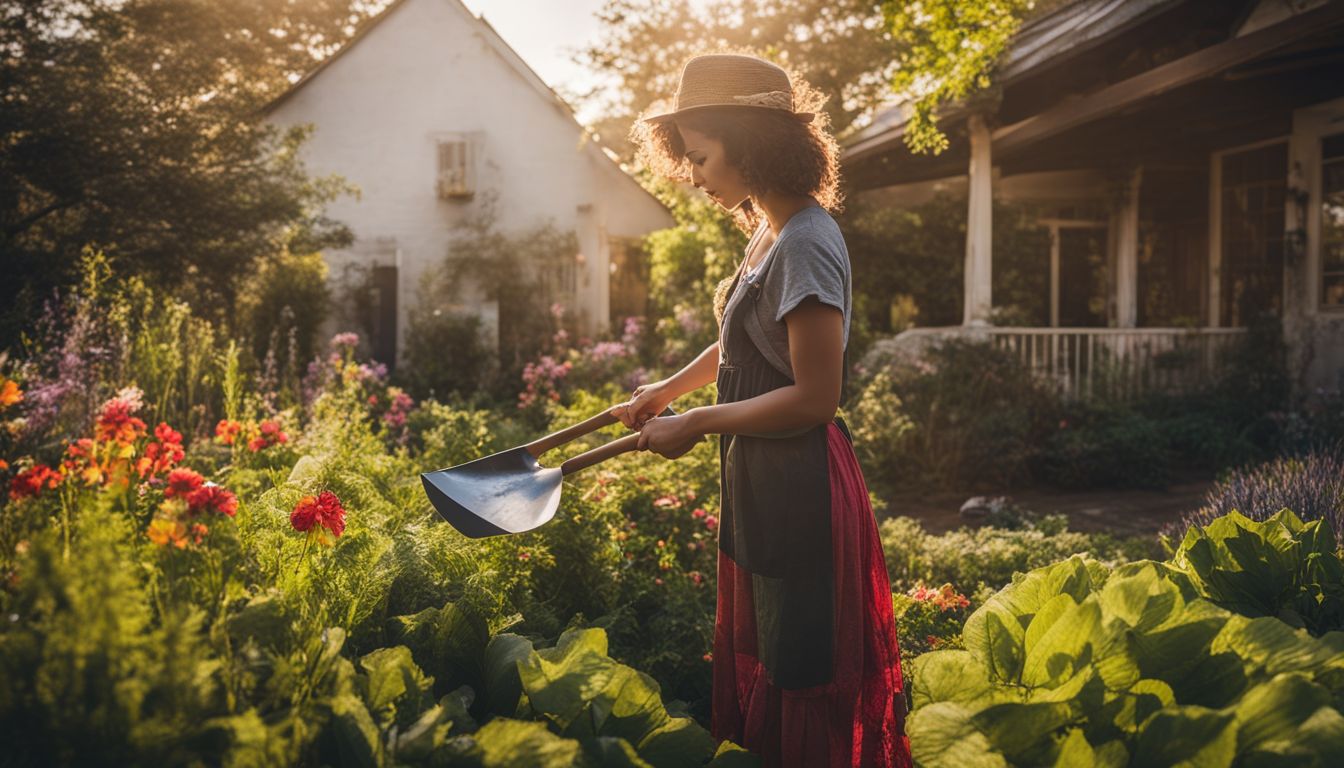
Composting is good for the Earth. It makes waste useful again. Coffee grounds from your kitchen can go into a compost pile. This means less waste in our landfills and more nutrients for our gardens.
Composting also helps make soil that has more air and holds water better. Over time, compost turns into rich, dark dirt called humus (HYOO-muss). Humus feeds plants to help them grow strong.
Soil fertility gets a boost from composting too! Gardens filled with this kind of soil have healthy plants that look great and fight off pests easily. Nitrogen content in coffee grounds gives extra strength to the compost pile.
Other things like old leaves or fruit peels add even more power to it. By using every bit of your coffee, including filters, you’re helping keep trash out of dumps while creating nutrient-rich dirt for the garden at home!
Benefits of Composting with Coffee Grounds
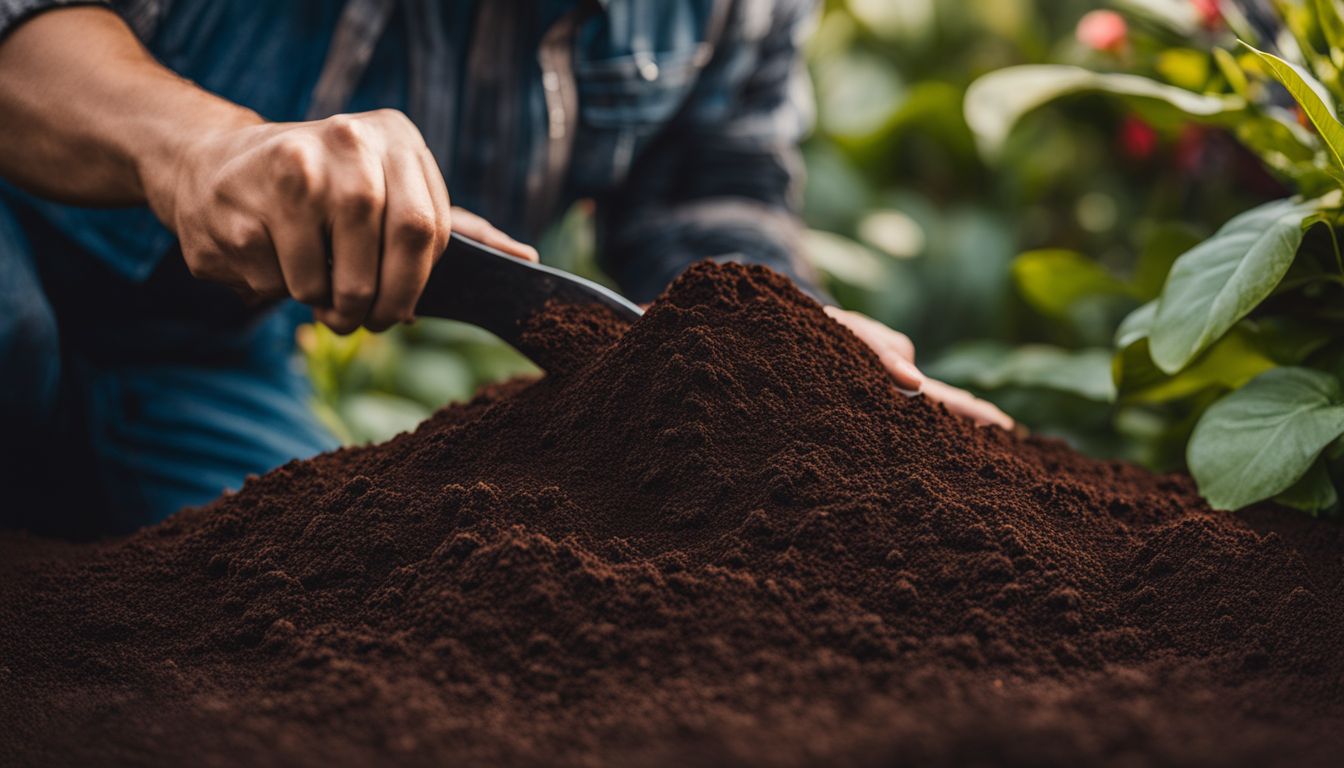
Composting with coffee grounds adds nitrogen to the compost, increases organic matter in soil, and improves soil structure and water retention.
Adds nitrogen to compost
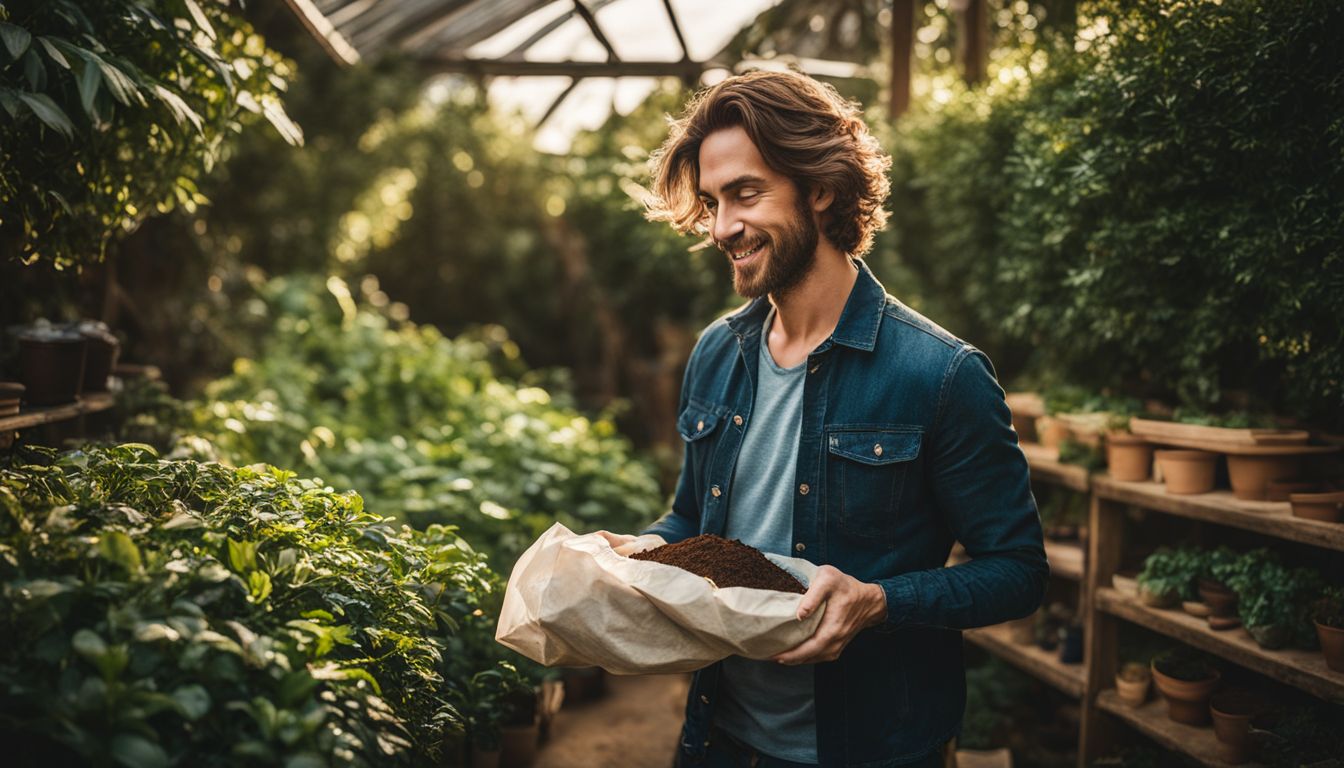
Coffee grounds are a great addition to compost because they add nitrogen, an essential nutrient for plant growth. Nitrogen helps plants produce chlorophyll, which is necessary for photosynthesis and healthy leaf development.
When coffee grounds break down in the compost pile, they release nitrogen into the organic matter, enriching the soil with this important element. This can lead to healthier plants and improved crop yields.
So instead of throwing away your used coffee grounds, consider adding them to your compost pile to boost its nutrient content and create nutrient-rich soil for your garden.
Increases organic matter in soil
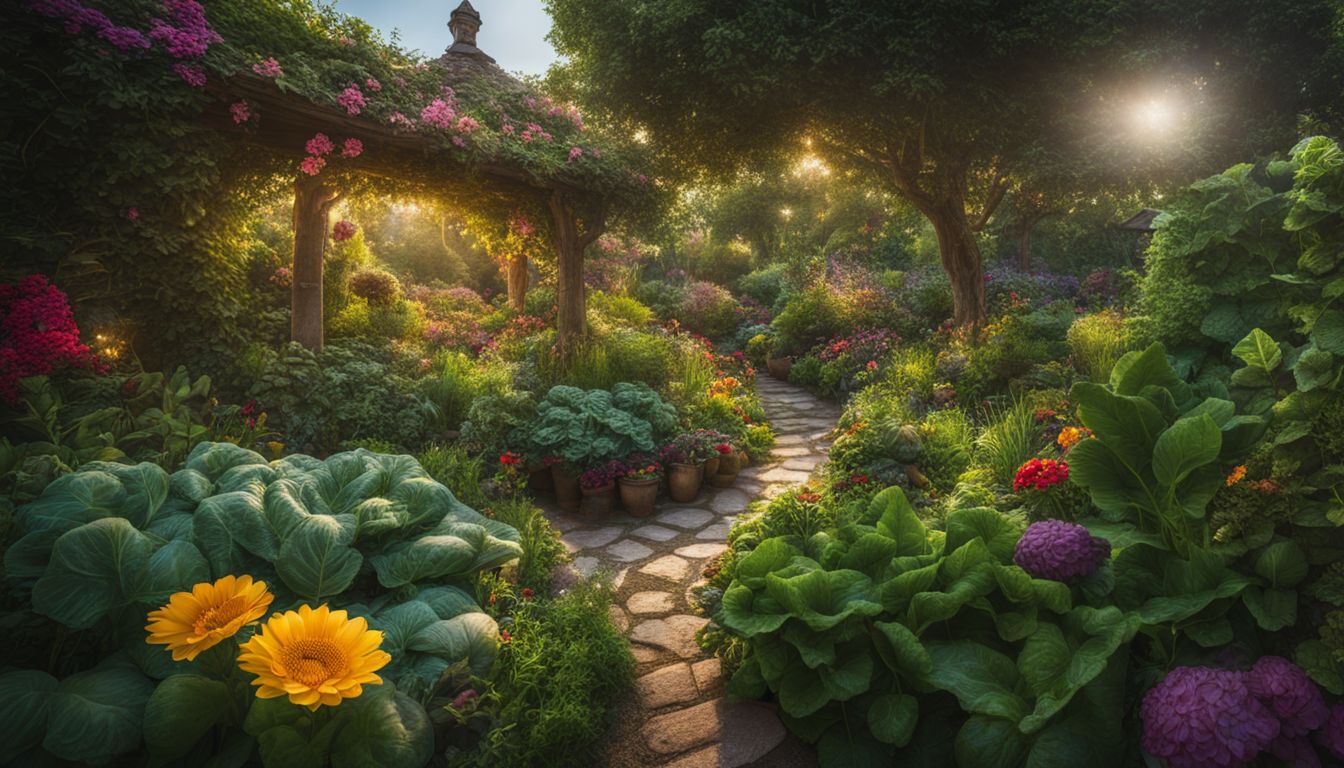
Coffee grounds are a fantastic addition to compost because they help increase organic matter in the soil. Organic matter is important for healthy soil because it improves its structure and helps with water retention.
Coffee grounds break down quickly in compost and contribute valuable nutrients to the soil, such as phosphorus, potassium, magnesium, and calcium. By incorporating coffee grounds into your compost pile or directly into garden beds, you can enhance the fertility of your soil and promote healthier plant growth.
So instead of throwing away your used coffee grounds, consider adding them to your compost to boost the organic matter in your soil!
Improves soil structure and water retention

Composting with coffee grounds can help improve the structure of your soil and increase its ability to retain water. Coffee grounds contain organic matter that breaks down over time, adding valuable nutrients to the soil.
This organic matter also helps to loosen compacted soil, allowing for better drainage and oxygen flow. As a result, your plants’ roots will have an easier time accessing water and nutrients, leading to healthier growth.
Additionally, the use of coffee grounds in composting helps create a rich and fertile environment for beneficial microorganisms that further enhance soil structure and nutrient availability.
How to Compost with Coffee Grounds
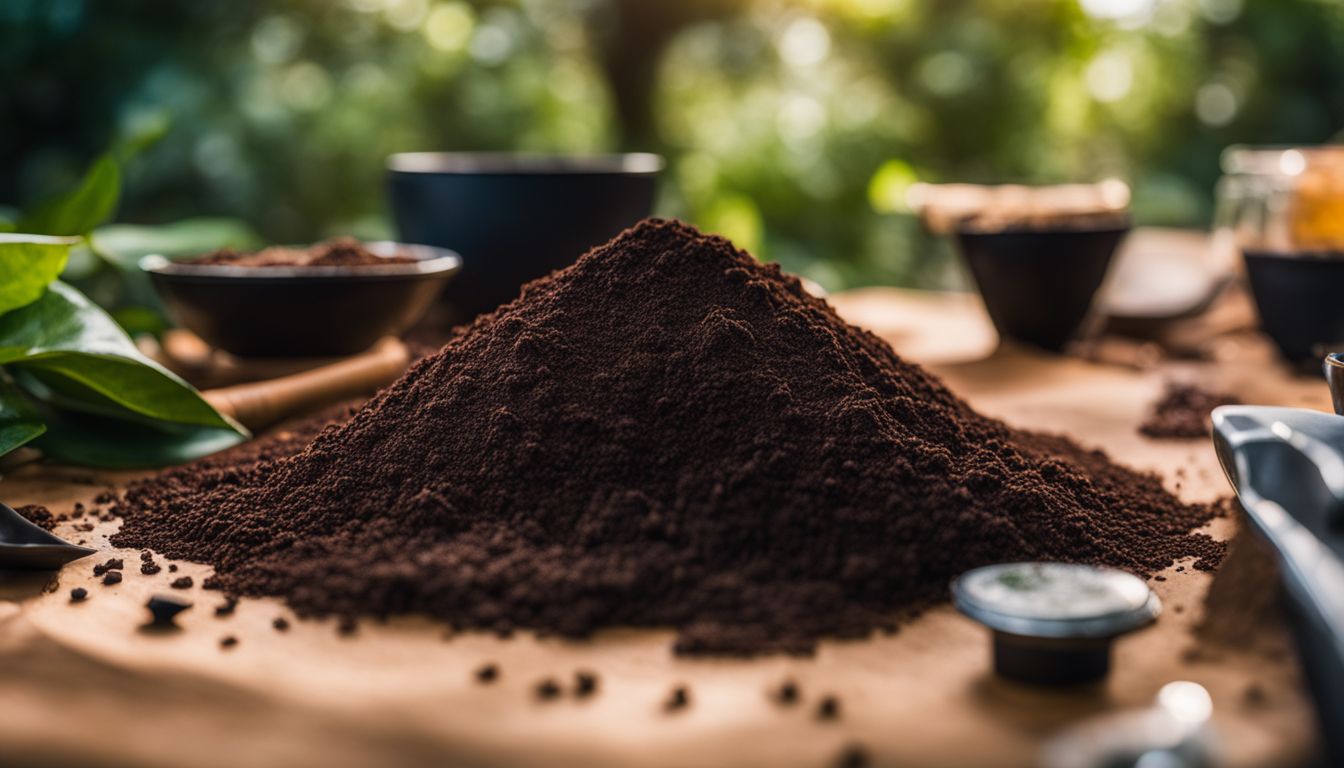
Mix coffee grounds with other compostable items in the proper ratio of brown-to-green materials for best results. Learn more about the steps and tips to successfully compost with coffee grounds.
Proper ratio of brown-to-green materials
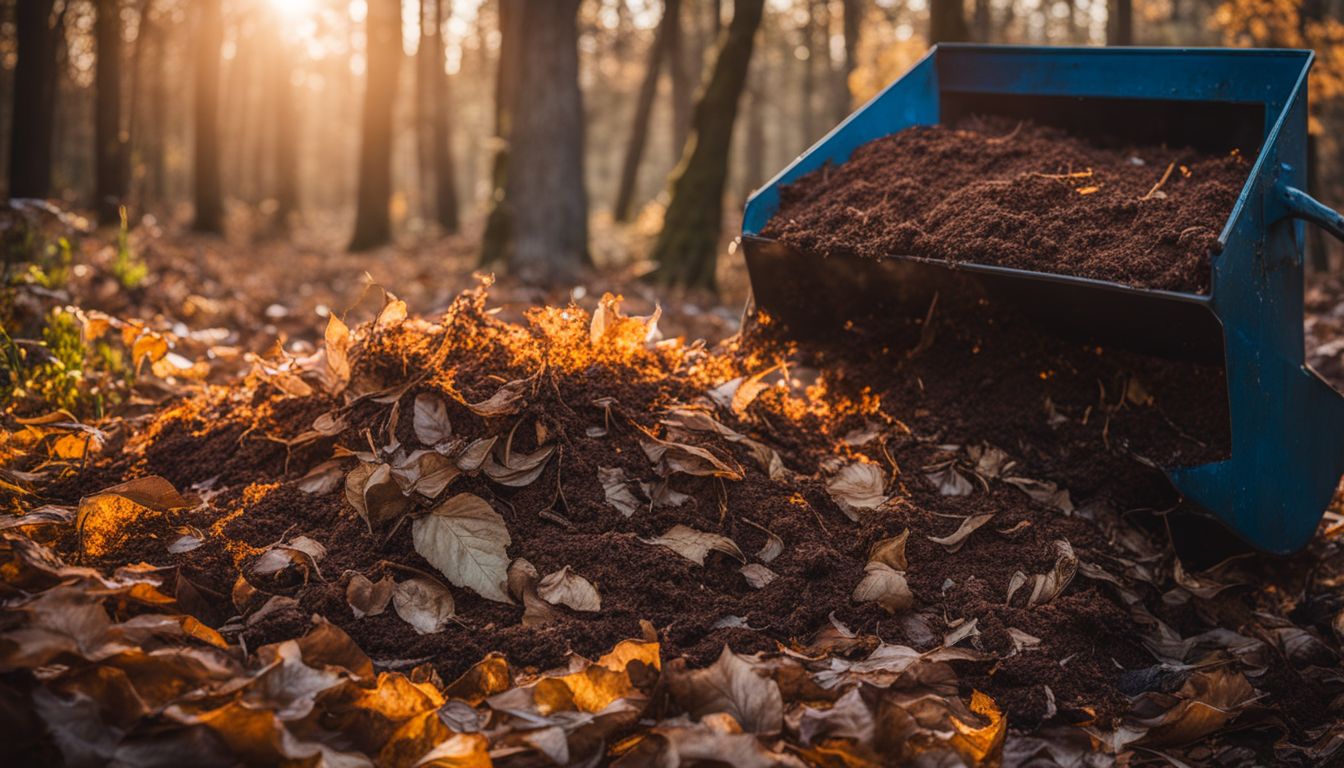
To create a successful compost pile with coffee grounds, it’s important to have the right ratio of brown-to-green materials. Brown materials include things like dried leaves, straw, and cardboard, while green materials are fresh items like grass clippings and fruit/vegetable scraps.
The ideal ratio for composting is about 3 parts brown material to 1 part green material. This balance ensures that the pile has enough carbon (from the brown materials) and nitrogen (from the coffee grounds and other greens) to break down efficiently.
When adding coffee grounds, make sure they don’t exceed more than 20% of the total compost mix. This helps prevent any issues with acidity or nutrient imbalances in your compost pile.
Remember: The proper ratio of brown-to-green materials is crucial for creating a healthy compost pile with coffee grounds as an ingredient. Keep in mind that too many coffee grounds can throw off the balance and affect how well your compost breaks down.
Mixing coffee grounds with other compostable items
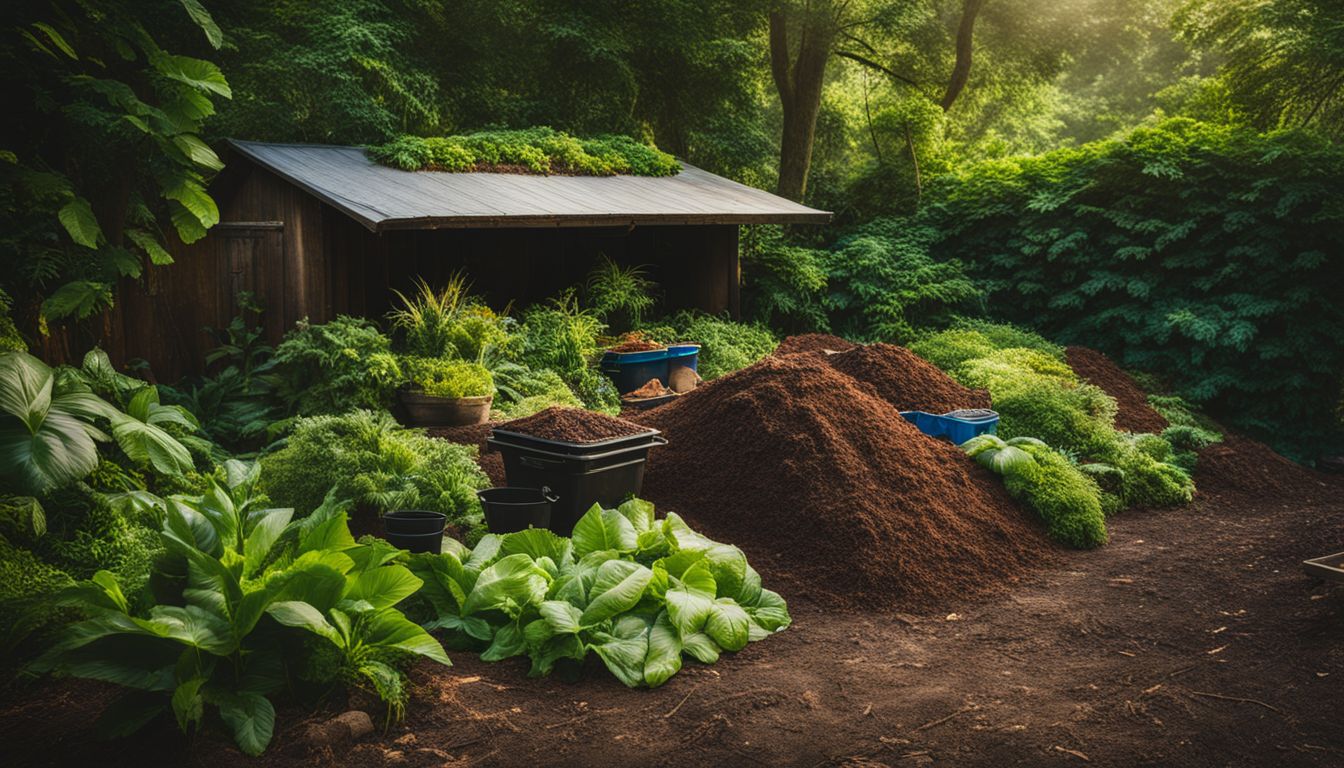
To properly compost with coffee grounds, it’s important to mix them with other compostable items. This helps create a balanced and nutrient-rich mixture for your plants. You can combine coffee grounds with things like vegetable scraps, eggshells, grass clippings, and leaves.
Remember to maintain the proper brown-to-green ratio in your compost pile by adding enough brown materials (like dried leaves or shredded paper) to balance out the green materials (including the coffee grounds).
By mixing coffee grounds with other compostable items, you ensure that your compost has a variety of nutrients and organic matter that will benefit your soil and plants.
Avoiding overuse of coffee grounds
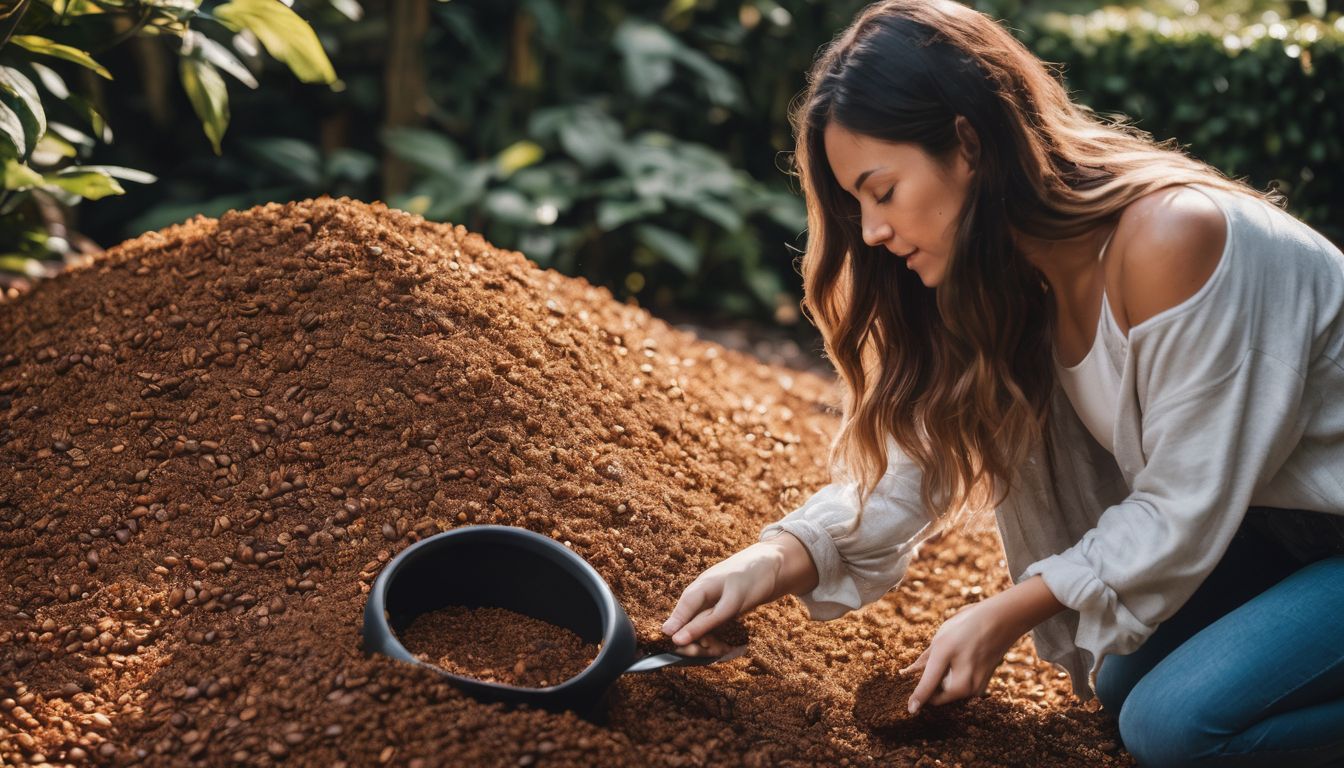
To avoid overusing coffee grounds in composting, it’s important to maintain a proper balance of brown and green materials. Coffee grounds are considered a green material, so be sure to mix them with sufficient amounts of brown materials like leaves or shredded paper.
This helps prevent the compost from becoming too acidic and ensures that the nitrogen-rich coffee grounds are balanced with carbon-rich materials. Adding too many coffee grounds can lead to an imbalance in nutrients and hinder the decomposition process.
So remember, moderation is key when adding coffee grounds to your compost pile or bin!
Best Practices for Composting with Coffee Grounds
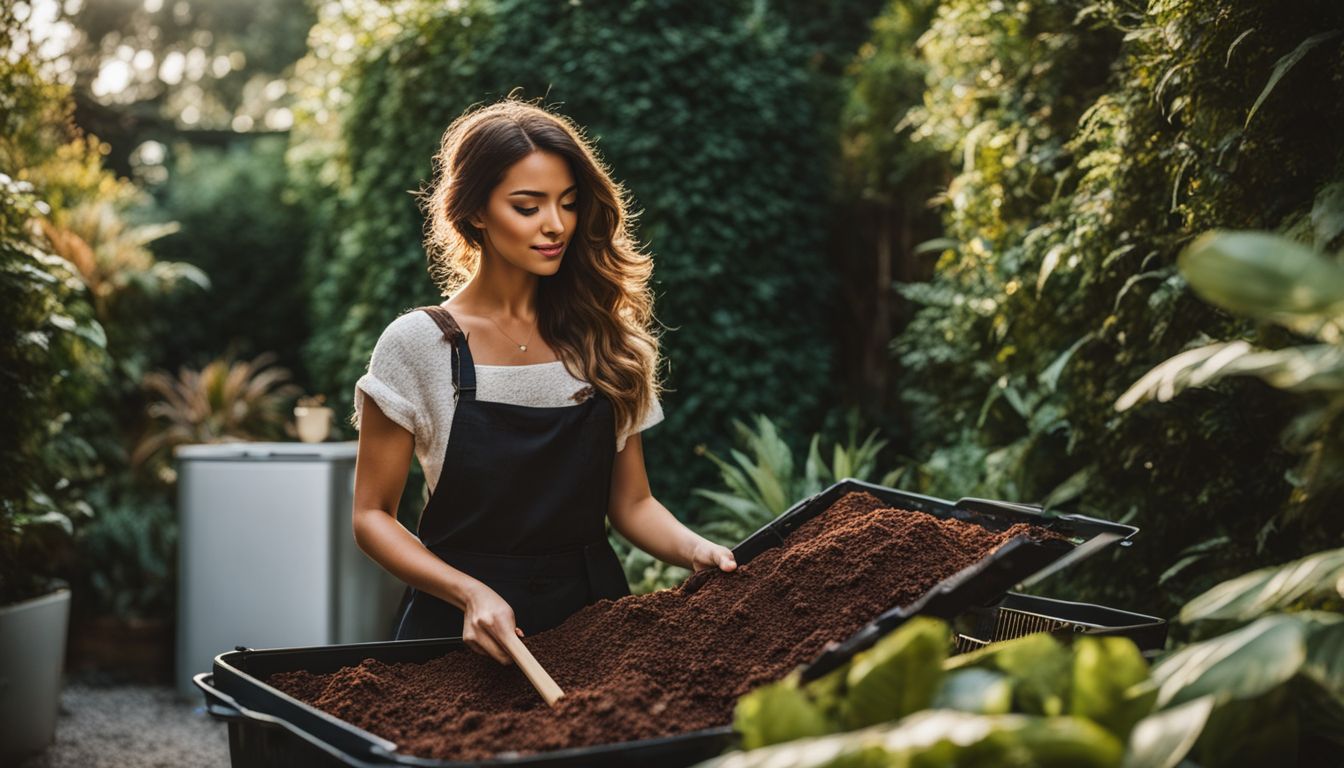
Use coffee filters in composting and avoid using coffee grounds with additives or oils. Incorporate the coffee grounds into an existing compost pile for maximum effectiveness.
Using coffee filters in composting
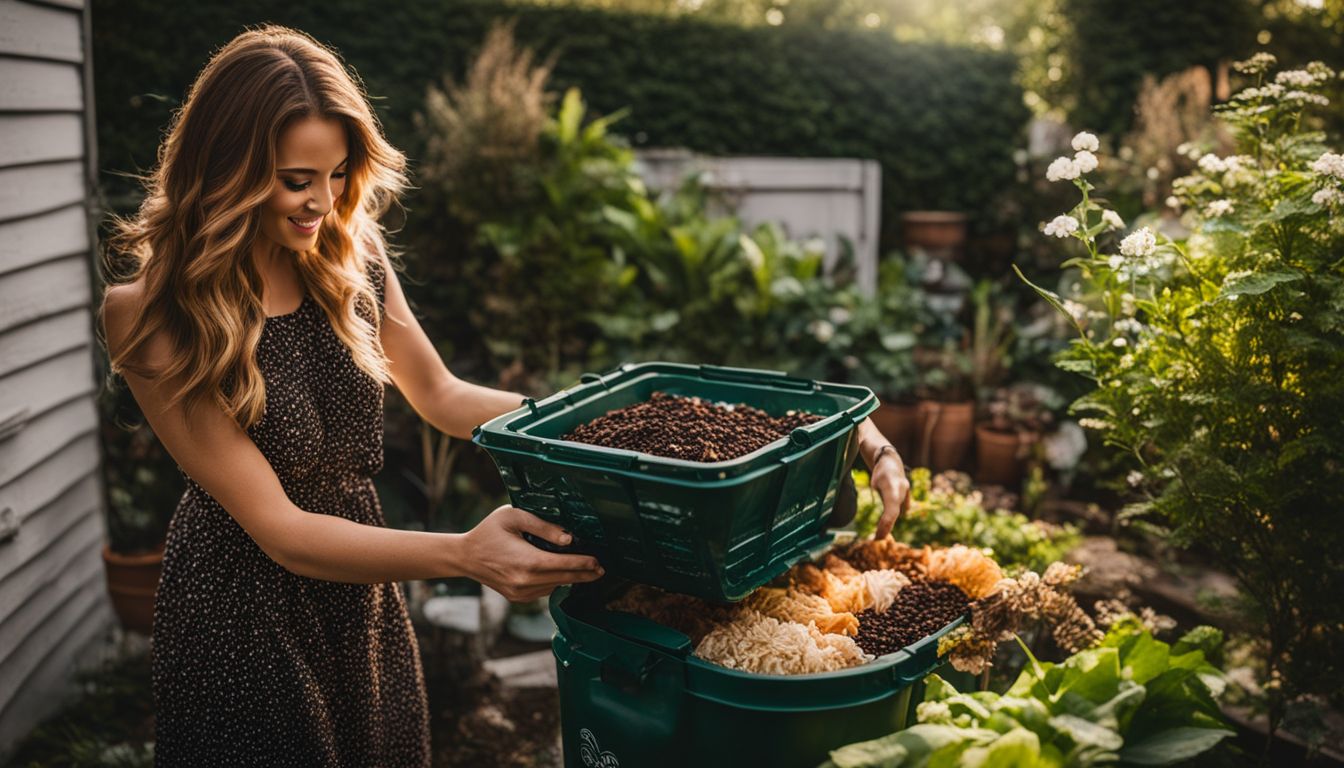
Used coffee filters can be composted along with coffee grounds as a way to reduce waste and add organic matter to your compost pile. Coffee filters are typically made from biodegradable materials, such as paper or hemp, which means they will break down easily in the composting process.
Before adding the used coffee filter to your compost pile, it’s important to remove any plastic parts or non-compostable materials. Once that is done, simply tear up the filter into smaller pieces and mix it in with the rest of your compostable items.
The coffee filter will break down over time and contribute to the overall nutrient-rich composition of the finished compost. So instead of throwing away used coffee filters, consider adding them to your compost pile for a greener gardening approach.
Avoiding coffee grounds with additives or oils
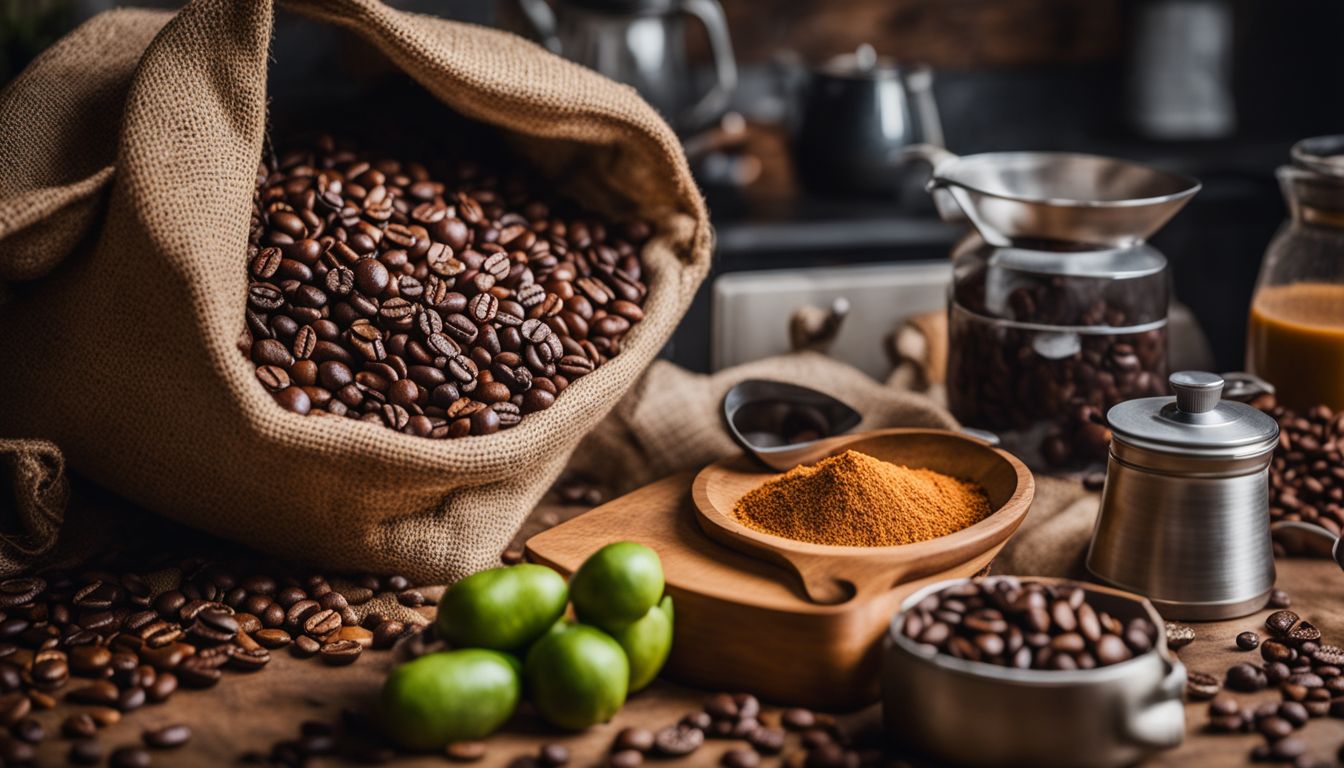
To ensure successful composting with coffee grounds, it is important to avoid using grounds that have additives or oils. These additives and oils can disrupt the balance of your compost pile and may even harm the plants in your garden.
Stick to plain coffee grounds without any extra ingredients for best results. Remember, you want to create nutrient-rich compost that benefits your soil and plants, so keeping it simple is key!
Incorporating coffee grounds into existing compost pile
To incorporate coffee grounds into an existing compost pile, simply sprinkle them onto the top layer of the pile. Coffee grounds are considered “green” compost material because they are high in nitrogen.
This helps to balance out the “brown” materials like leaves or cardboard. The nitrogen in coffee grounds provides essential nutrients for microorganisms to break down organic matter and create rich, nutrient-rich compost.
It’s important to spread the coffee grounds evenly and not clump them together to ensure proper decomposition. By adding coffee grounds to your existing compost pile, you can enhance its fertility and create a more sustainable gardening practice.
Conclusion
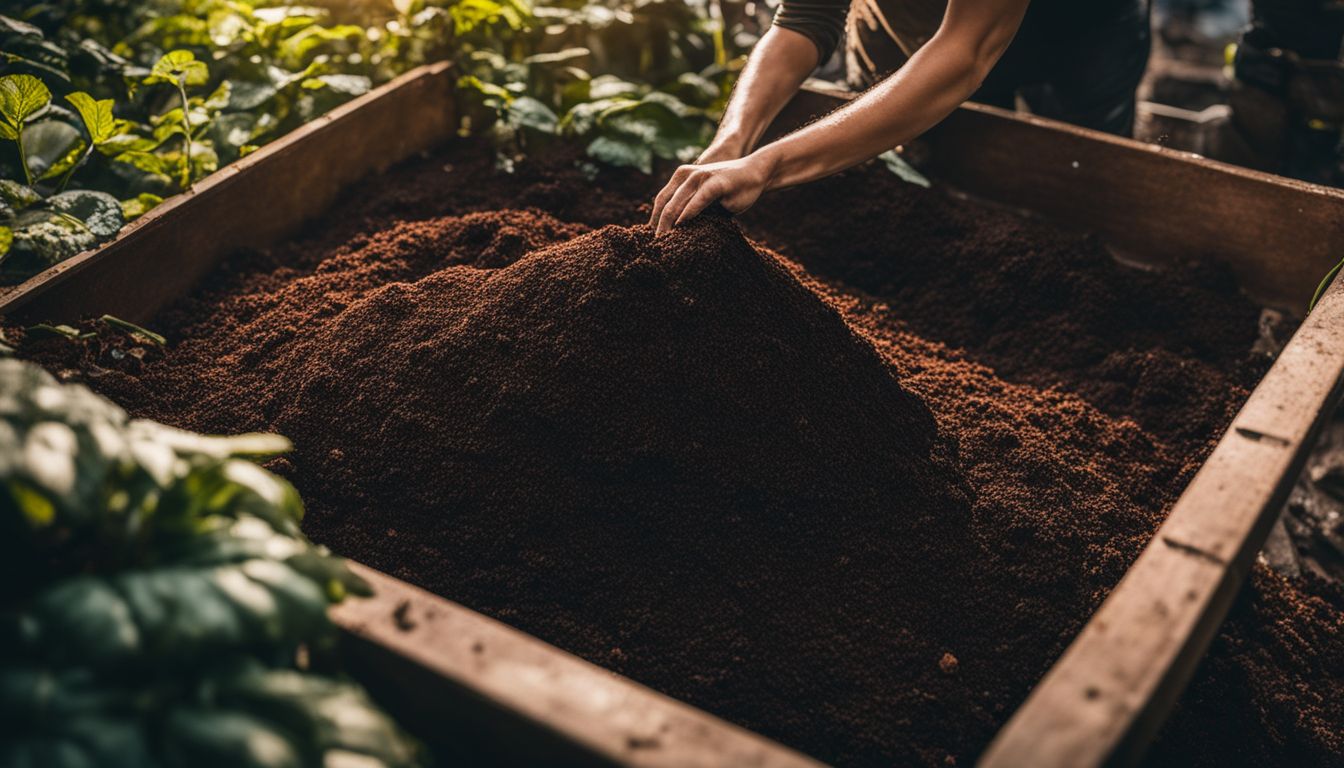
Composting with coffee grounds is an easy and sustainable way to improve your garden soil. By adding coffee grounds to your compost pile, you can increase the nitrogen content and enhance the organic matter in the soil.
Remember to use a proper ratio of brown-to-green materials and avoid overusing coffee grounds. So go ahead and start using those leftover coffee grounds for a healthier garden!
FAQs
1. What are the benefits of composting with coffee grounds?
Composting with coffee grounds improves soil fertility and helps in waste management by recycling coffee waste into a nutrient-rich compost ingredient.
2. How does adding coffee grounds to your compost work?
Adding coffee grounds to a worm bin or other compost helps balance the brown-to-green ratio, as they act as green compost material improving overall organic gardening health.
3. Can using liquid coffee in my garden help against slugs?
Yes, using liquid coffee can be an effective slug killer due to caffeine present in it that repels pests like slugs.
4. Does the acidity of used coffee grounds affect my plants?
No! The acidity level of used Coffee Grounds decreases after brewing making them neutral for most plants when added as a soil amendment.
5. Is there any use for leftover caffeine content from used ground coffee?
Used ground Coffee might contain remaining caffeine, which makes it great for aiding pest control in gardens; additionally, its organic matter boosts soil fertility.

As a dedicated mother and passionate software developer, she weaves her diverse experiences into captivating stories that inspire and engage readers. Emma's love for sustainable living and environmental consciousness permeates both her personal and professional life. When she's not immersed in the world of coding and software development, Emma can be found nurturing her family and tending to her thriving organic garden. Her commitment to sustainable practices extends to every aspect of her life, from repurposing household items to embracing eco-friendly technologies.










